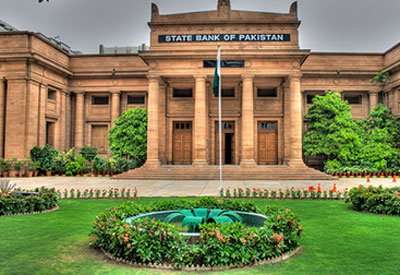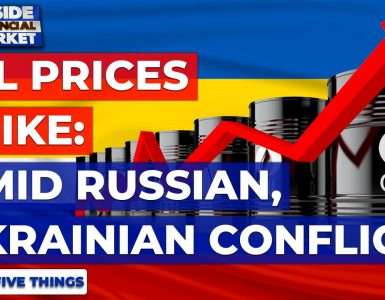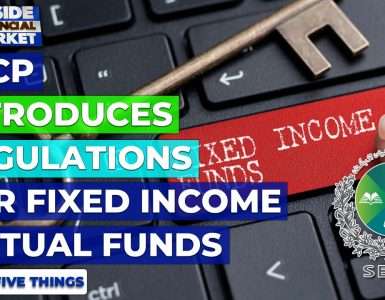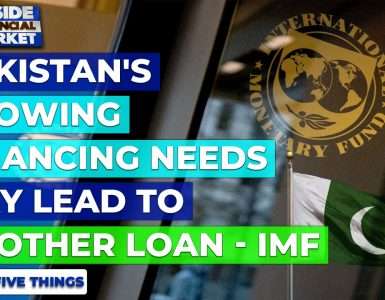KARACHI: The State Bank of Pakistan (SBP) has retained its stance to soften the monetary policy, reducing the policy rate by 50 basis points to 6 percent for the next two months mainly on the back of controlled inflation coupled with improving macroeconomic indicators.
This was the third slash in the policy rate in the calendar year by the central bank, which made a cut of 100 basis points in January, whereas it made another reduction of 50 basis points in March, totalling 200 basis points now.
The monetary policy statement issued on Saturday said the year-on-year headline inflation decreased by 1.7 percent in August 2015 from 7 percent in August 2014, whereas month-moving average CPI inflation came down to settle at 3.6 percent in August 2015, as compared to 8.4 percent in August 2014.
The current deceleration owes much to the smooth supply of perishable food items and falling international oil price. Besides, the recent increase in natural and compressed natural gas prices and their likely second round impacts would be offset by lower global oil price that has yet to find the bottom.
Continuation of the current trends along with moderate pick-up in aggregate demand would largely determine the path of inflation in FY 2015-16. Thus, there is no change in SBP’s forecast of average CPI inflation for FY 2015-16 with its range of 4.5-5.5 percent, remaining below the annual plan target of 6 percent. However, the latest IBA-SBP survey of September 2015 has reported lower inflation expectations for the coming months.
There are, however, two possible upside risks to this forecast; one is government plans of paring down of subsidy on electricity along with an increase in its tariffs and the possible adverse impact of low food prices on crop production; the other is downside risks to the forecast, including the lesser likelihood of recovery in global commodity prices, especially that of oil.
With the current trends and projections, the probability of downside risks appear to be greater than the upside risks, the SBP statement added.
The situation in external current account at the beginning of FY 2015-16 is not much different from the end of the last fiscal year. While the exports again declined in the month of July 2015, external current account deficit recorded slight improvement due to declining oil import payments and increasing workers’ remittances.
A current account deficit of the size of end-FY15 seems manageable in this fiscal year because of the support of expected surplus in the capital and financial account in FY16 on the back of planned euro/Sukuk bond inflows, official disbursements, and the remaining IMF funding under the EFF programme. Apart from yielding an overall balance of payments surplus, this would help maintain the foreign exchange reserves’ upward trajectory of the last two fiscal years, the SBP statement added.
However, increases in exports and foreign direct investments are imperative for sustainability of external sector. In this regard, recent improvements in law and order situation and continued macroeconomic stability are likely to increase the prospects for long-term foreign capital inflows.
Moreover, going forward, much-needed boost to Pakistani exports may come through US economic recovery and through further gains in EU’s GSP-Plus scheme. However, structural bottlenecks, especially in the textile sector and subdued international commodity prices, remain a major risk to exports outlook.
The contraction in broad money (M2) during July 1 to August 28, 2015 was mainly a result of reduction in net domestic assets of the banking system. Increase in government borrowing from scheduled banks was offset by repayment to the SBP and the Pakistan Investment Bonds (PIBs) maturing during this period. The retirement of working capital in July FY16 by a majority of the private sector businesses is as per their normal credit cycle. The off-take of fixed investment loans by energy generation and distribution, chemicals and services sectors signal possible pick-up in their productive activity in the coming months. Therefore, in the coming days, credit off-take is expected to strengthen further.
With better situation of law and order, investor and consumer confidence is improving, showing a growth of 3.3 percent in large-scale manufacturing, which is expected to gain further traction at the back of improvement in energy supplies.
Implementation of infrastructure development and energy projects under the China-Pakistan Economic Corridor would further enhance the improving investment environment. Therefore, there is anticipation of higher economic activity in FY 2015-16, which is expected to boost credit uptake, the SBP forecasts










